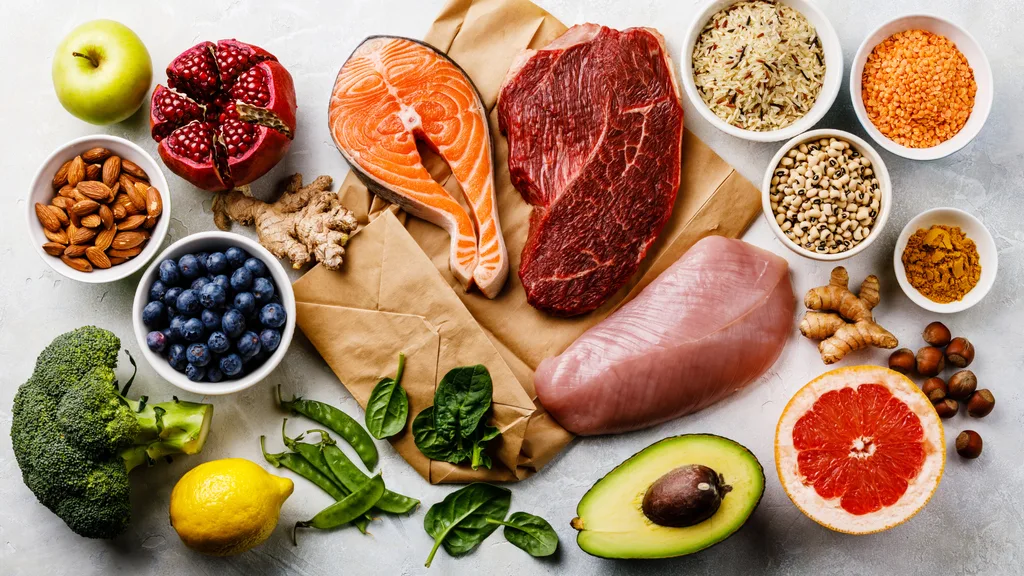About 10 years ago, Dr Tanya Finnie’s life changed. Diagnosed with psoriatic arthritis and fibromyalgia – chronic, autoimmune conditions that cause joint pain, fatigue, brain fog and inflammation throughout her body – the professional speaker and mother of one had to find a way to exist in her new body while still living her life.
“I’ve sat through meetings silently pushing through pain because I didn’t want to be seen as dramatic,” she says. “I’ve had to cancel plans, not because I didn’t want to show up, but because my body had already decided for me. There’s a constant tension between wanting to appear ‘fine’ … and the reality that, some days, simply existing takes all my energy.”
Tanya wasn’t always this sick. The symptoms have gotten worse over the years, and in the last couple she has been trialling different medications as well as making lifestyle changes to raise her quality of life. “It’s a complicated disease,” she says. “It’s affected my life in various ways, from having to figure out how to manage the fatigue with being a professional speaker on large stages to figuring out new ways to travel.” She can’t walk around as much without her feet ballooning.
It doesn’t help that the disease remains largely invisible. “Society still doesn’t quite know what to do with invisible diseases – we have a long way to go when it comes to understanding that not all illness is visible, linear, or easily defined,” she says.

What is inflammation?
Psoriatic arthritis (PsA) is not the same as the most commonly known “arthritis” (a global term meaning joint disease, of which there are more than 100 types), osteoarthritis, which is the wear and tear of joints.
In contrast, PsA is one of the “inflammatory” arthritis diseases which are not age or wear-and-tear-related, but instead reflect unwanted activity of the immune system, says Eric Morand, a Monash University professor and director of rheumatology at Monash Health.
“In these diseases, the immune system, which is there to protect you from infection by attacking germs, mistakenly activates to cause inflammation in a tissue that is not infected,” he says.
PsA is one of a host of conditions thought to be the result of one type of inflammation called “chronic inflammation”. But because it’s not the only inflammation out there, it means there is some confusion around what inflammation actually is and what it does, despite emerging in recent years as a key focus in health, wellbeing, ageing and in chronic diseases.
“Acute inflammation is easy to recognise – like swelling from an injury or pus from an infected cut. It’s the body’s immune response to injury or infection, sending white blood cells to fight off threats,” explains Professor Seth Masters, head of the Centre for Innate Immunity and Infectious Diseases at Hudson Institute of Medical Research.
Chronic inflammation involves a long-term, low-level immune response that can contribute to major diseases including cardiovascular disease, stroke, cancer, diabetes, chronic kidney disease, non-alcoholic fatty liver disease and neurodegenerative disorders.
“The problem is when you have a small increase in those same white blood cells that we see in acute inflammation, but causing inflammation all over your body chronically for a long period of time – that’s what’s really hard to put your finger on,” Professor Masters says.

A 21st century disease
Unlike acute inflammation, which has historically been essential for survival, researchers increasingly believe that chronic inflammation is a modern disease caused by sedentary lifestyles, processed foods and exposure to a cocktail of noxious chemicals.
“For most of human evolution, avoiding infection was the biggest challenge. Now, we’ve got soap, running water and hygiene, and our immune system is still turned up high – perhaps too high,” Professor Masters says. “The inflammation that was really helpful a long time ago isn’t actually that helpful anymore.”
Chronic inflammation contributes to the leading causes of death worldwide, accounting for over half of all deaths linked to inflammation-driven conditions, and one in five cancers.
Studies show that as the world has become more industrialised, people are moving less. One global study found that about 31 per cent of people don’t get enough physical activity based on international health guidelines. This number is generally higher in wealthy countries like Australia, where government figures show that 37 per cent of adults aged 18-64 do not meet the physical activity component of the guidelines, and 73 per cent do not do enough muscle-strengthening activities.
It’s a problem because our muscles don’t just help us move – they also act like organs by releasing helpful proteins (called myokines) when we exercise. These proteins travel through the blood and can help reduce inflammation in the body. So when we don’t move enough, it can lead to a range of health problems such as insulin resistance, high blood pressure, weaker muscles and – you guessed it – higher levels of inflammation.
This is why it’s so important to exercise, says Dr Grace Rose, a lecturer in clinical exercise physiology at the University of the Sunshine Coast. In 2020, she published a study looking at whether the intensity of exercise makes a difference to chronic inflammation in adults, and found that intensity doesn’t significantly influence chronic inflammation, and that regular exercise tends to reduce it in the long-term.
“That tells us that higher or lower intensity exercise doesn’t really differ in how much chronic inflammation there is in the body,” she says.
It’s also not true that exercising too much adds to inflammation. “What happens when you exercise is there is a period of what we call acute inflammation, but that usually comes down within 48 hours,” Dr Rose adds. “The levels of inflammation that are experienced immediately after exercise is not what people will necessarily experience in the long-term if they have enough recovery between sessions.”

The diet dilemma
A Western diet – full of calorie-dense, ultra-processed foods, added sugars and red meat, but low in fruits, vegetables and other plant foods – has been linked to higher levels of inflammation.
“A typical Western diet, also considered a pro-inflammatory diet, is in line with the way most Australians eat – high levels of processed foods, alcohol, processed meat, fried foods,” says Professor Lauren Ball, the director of the Centre for Community Health and Wellbeing at The University of Queensland. “These foods can increase the amount of inflammation happening systemically across the body.”
Because these foods are calorie-dense but nutrient-poor, they enhance inflammation by depriving the body of essential micronutrients. “They have low levels of the micronutrients and the minerals that we know are essential for bodily function – processing has removed them,” Professor Ball adds.
A recent, groundbreaking study that looked at how sticking to eight different diets and eating ultra-processed foods affected ageing over a 30-year period found that people who followed the Alternative Healthy Eating Index had the strongest association with healthy ageing, followed by DASH (Dietary Approaches to Stop Hypertension) and MIND (Mediterranean-DASH Intervention for Neurodegenerative Delay). These diets feature consumption of a wide range of fruits and vegetables, whole grains, nuts and legumes, healthy fats such as olive oil, fish and seafood, and moderate alcohol intake.
The gender divide
Inflammatory diseases affect men and women differently in how often they occur, how they show up in the body, how serious they are, how they’re likely to progress and how well treatments work. Generally speaking, women have a stronger and more active immune system, which means they can often fight off infections more quickly.
However, this makes women more likely to develop autoimmune diseases where the body mistakenly attacks its own cells. Autoimmune diseases affect over one million Australians and, in the Western world, are a leading cause of death in women under the age of 65. Women are also up to four times more likely to develop an autoimmune disease than men.
Hormones also play a big role, says Professor Masters. Ultimately, this leaves women with an increased risk of autoimmune diseases, alongside elevated responses to vaccines and viral infections, he adds. “A good example of this is COVID, where women were less likely to die from infection, but more likely to suffer the immune consequences of long-COVID.”
As Dr Tanya Finnie knows all too well, living with an inflammatory condition is a balancing act – of energy, expectations and acceptance. “It’s not always graceful, but it is deeply human. And even if you can’t see it, that doesn’t mean it’s not there. My illness may be invisible, but my story – like so many others’ – deserves to be seen.”

